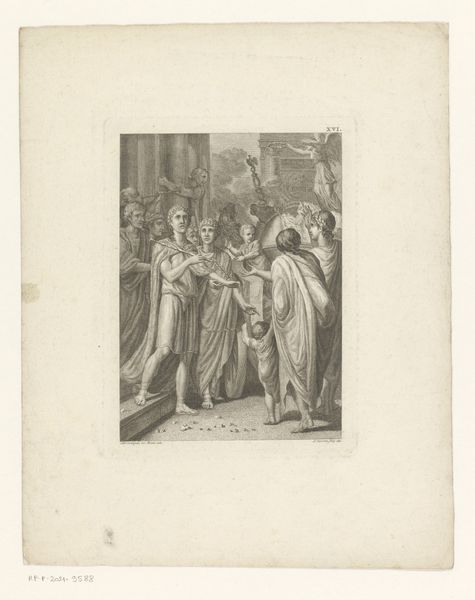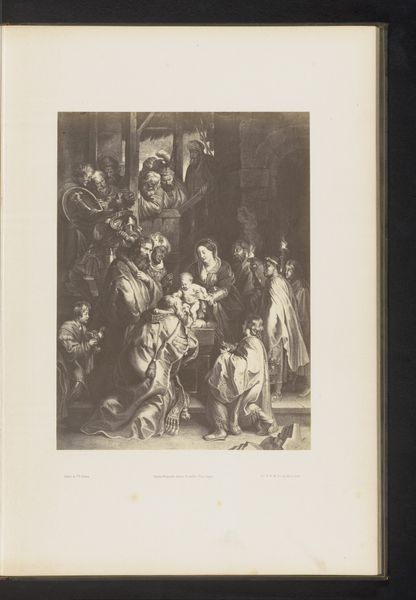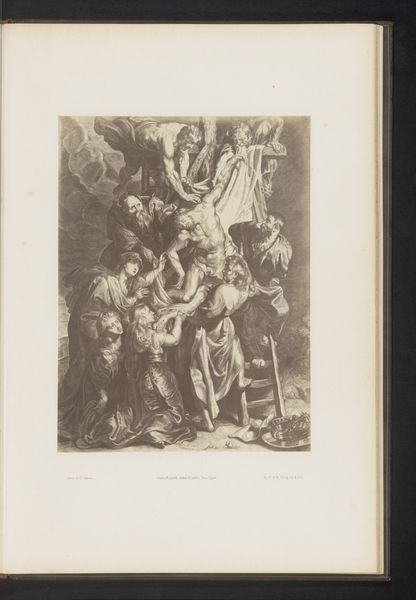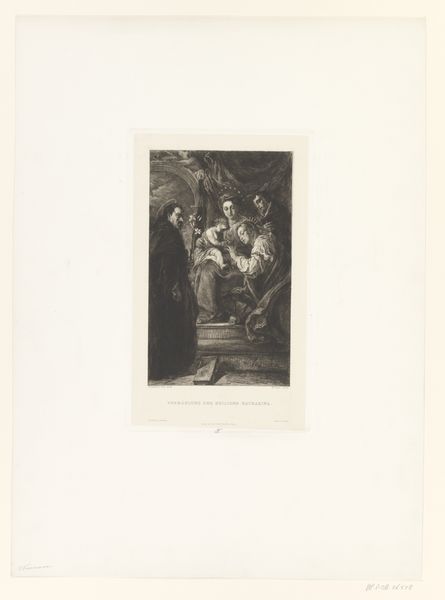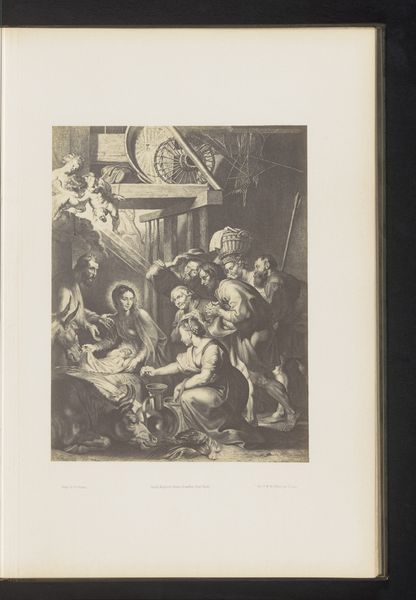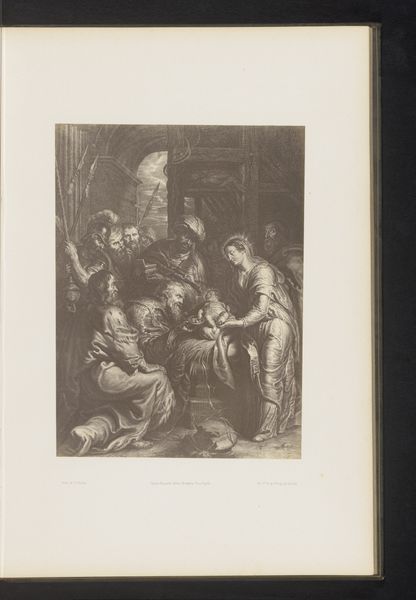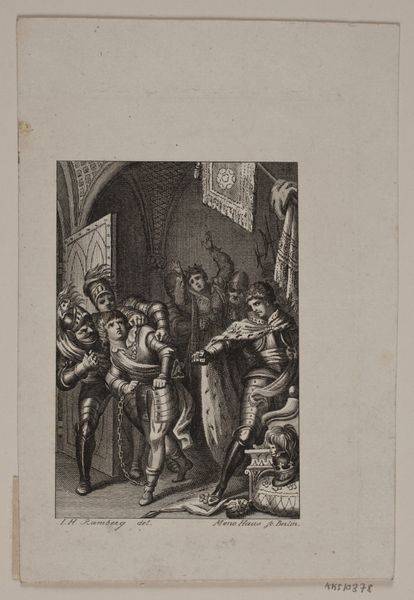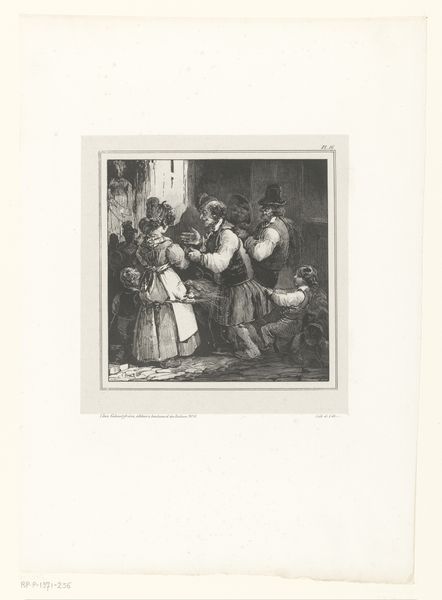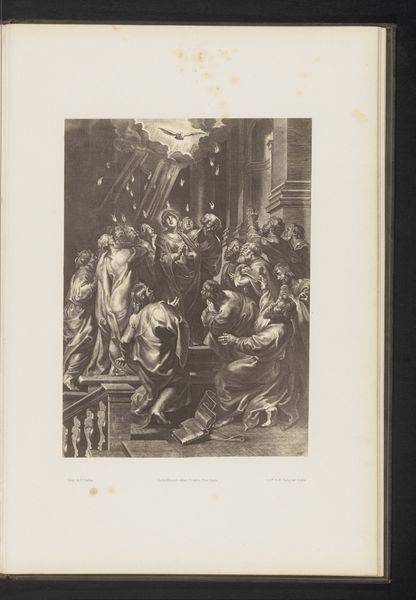
Fotoreproductie van een gravure van Het huwelijk van de maagd Maria door Schelte Adamsz. Bolswert, naar het schilderij door Peter Paul Rubens before 1858
0:00
0:00
Dimensions: height 297 mm, width 228 mm
Copyright: Rijks Museum: Open Domain
Curator: Here we have a photographic reproduction of an engraving entitled "The Marriage of the Virgin", after a painting by Peter Paul Rubens. The engraver is Schelte Adamsz. Bolswert, and this particular print comes from before 1858. Editor: There’s a dreamlike quality to it. Despite being a print, it captures so much movement – those swooping cherubs overhead, the textures of the fabrics… almost like frozen Baroque music. Curator: It is interesting that you mention "frozen Baroque music" when speaking about an engraving, as they were produced for a market with the clear aim of circulating a certain artistic expression through the development of industrial processes of multiplying images. Consider also that Schelte Adamsz. Bolswert operated within a sophisticated network of printmakers and publishers who carefully reproduced and disseminated Rubens' paintings. Editor: Of course, this brings to mind a certain tension: a high art painting meticulously copied, democratized, perhaps even commodified through the labor-intensive craft of engraving. All those fine lines... Can you imagine how long it must have taken? It almost feels like devotional work in itself. Curator: Precisely. Engravings after paintings played a crucial role in shaping artistic taste and awareness in the centuries before photography. Bolswert's skill, however, transforms reproductive work into a refined visual experience available to a wider audience. He is, we should remember, facilitating the expansion of Rubens' brand. Editor: And looking at the central figures, the almost hesitant acceptance on Mary's face, the solemn blessing… It's charged with narrative despite being, as you noted, a reproduction. I like that we still have the power to feel these details through another person's hand. Curator: The nuances of light and shadow contribute to this expressiveness. In terms of circulation, prints were more than just surrogates; they became valuable objects for collectors in their own right, their aesthetic qualities and skillfulness celebrated. Editor: Absolutely. It prompts a thought: Rubens' original might be considered the masterpiece, the source, yet Bolswert’s work introduced this visual story to so many more. The materials, the labour...it is like an artistic act in its own right. Curator: Food for thought, indeed, on the artistic processes beyond initial "inspiration". Editor: Certainly is! And from my perspective, I found in this black-and-white reproduction something touching: both about that marital scene itself, and all that intense artistic effort that led to its material existence today.
Comments
No comments
Be the first to comment and join the conversation on the ultimate creative platform.

